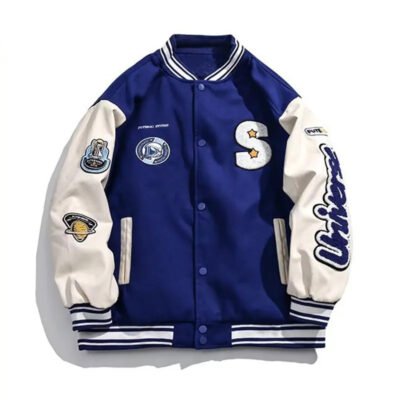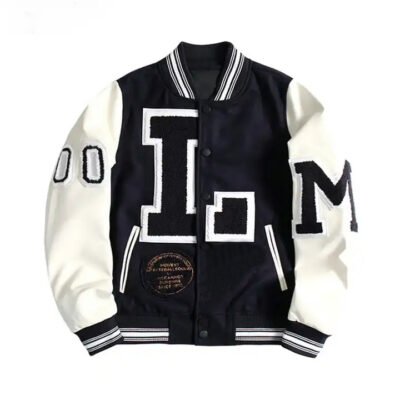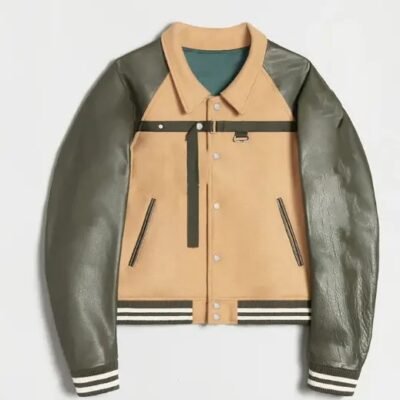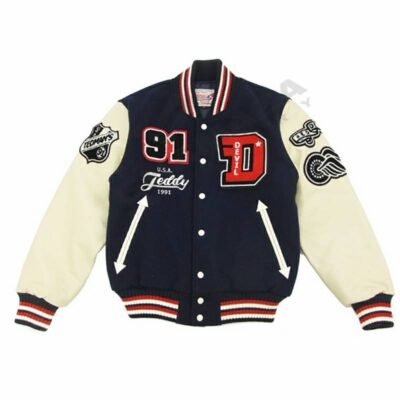Varsity jackets, often referred to as letterman jackets, have transcended their origins in American collegiate sports to become a timeless fashion staple. A significant aspect of their enduring appeal lies in the materials used in their construction. Selecting the right fabric for a varsity jacket is crucial not only for aesthetics but also for comfort, durability, and functionality. This article delves into the essential factors to consider when selecting fabrics for varsity jackets and offers recommendations for the best materials to use.
1. Wool: The Classic Choice
Why Wool?
Wool is the traditional fabric for varsity jackets, particularly for the body. Its natural insulation properties make it ideal for keeping wearers warm during colder months. Wool is also highly durable, resistant to wrinkles, and offers a luxurious feel.
Types of Wool
- Melton Wool: A densely woven wool that is felted and brushed, giving it a smooth finish. It’s the most popular choice for varsity jackets due to its thick texture and durability.
- Twill Wool: This type has a diagonal weave, making it slightly lighter than Melton wool but still robust enough for regular wear.
Pros:
- Excellent insulation
- Long-lasting and durable
- Water-resistant to a degree
Cons:
- Can be heavy
- Requires proper care to avoid shrinkage and damage
2. Leather: A Touch of Luxury
Why Leather?
Leather is often used for the sleeves of varsity jackets, adding a luxurious touch and a contrasting texture to the wool body. It’s a strong, flexible material that provides a polished look while offering protection from the elements.
Types of Leather
- Cowhide: Thick, durable, and resistant to wear, making it ideal for jackets that will see frequent use.
- Sheepskin: Softer and lighter than cowhide, it offers comfort while still maintaining durability.
- Vegan Leather: A synthetic alternative that mimics the look and feel of real leather, perfect for those seeking an ethical option.
Pros:
- Adds durability and style
- Water-resistant
- Ages well, developing a unique patina
Cons:
- Can be expensive
- Requires maintenance to prevent cracking or drying out
3. Cotton: For Lightweight Comfort
Why Cotton?
Cotton is a versatile fabric that can be used for both the body and the lining of varsity jackets. It’s breathable, lightweight, and comfortable, making it an excellent choice for jackets intended for warmer climates or casual wear.
Types of Cotton
- Twill Cotton: Known for its diagonal weave, twill cotton is durable and has a slightly heavier feel, making it suitable for a more structured look.
- Canvas: A heavier, durable cotton fabric that provides structure and is often used in workwear-inspired designs.
- Cotton Fleece: Soft and insulating, cotton fleece is ideal for linings, providing warmth without adding too much bulk.
Pros:
- Breathable and comfortable
- Easy to care for
- Affordable and widely available
Cons:
- Less durable than wool or leather
- Prone to shrinking and wrinkling if not properly cared for
4. Synthetic Blends: Balancing Performance and Cost
Why Synthetic Blends?
Synthetic fabrics like polyester and nylon are often blended with natural fibers to create a material that balances durability, cost, and performance. These blends can offer water resistance, enhanced durability, and a modern, sleek look.
Popular Blends
- Wool-Polyester Blend: Offers the warmth and durability of wool with the added benefits of polyester’s resistance to shrinking and stretching.
- Nylon-Cotton Blend: Lightweight, breathable, and durable, this blend is excellent for outerwear that needs to be both comfortable and weather-resistant.
Pros:
- Affordable
- Lightweight and easy to care for
- Often more water-resistant than natural fibers
Cons:
- May lack the luxurious feel of pure wool or leather
- Not as breathable as natural fibers
5. Linings: The Unsung Hero
Why Linings Matter
The lining of a varsity jacket plays a critical role in comfort, breathability, and overall feel. It also impacts the jacket’s durability by protecting the outer fabric from friction and wear.
Common Lining Fabrics
- Satin: Smooth and shiny, satin linings add a touch of luxury and are comfortable against the skin.
- Quilted Polyester: Provides added warmth and structure, ideal for jackets worn in cooler climates.
- Cotton: Breathable and natural, a cotton lining is soft and comfortable, though it may not be as warm as other options.
Pros:
- Enhances comfort and warmth
- Adds to the jacket’s overall structure and longevity
- Can be customized for different climates and uses
Cons:
- May add to the cost
- Some synthetic linings may not be as breathable
Conclusion
The selection of fabrics for a varsity jacket is crucial in determining its quality, durability, and style. Whether you opt for the classic combination of wool and leather or explore modern synthetic blends, understanding the properties of each fabric will help you make an informed decision. By considering factors such as climate, usage, and personal style, you can create a varsity jacket that not only looks great but also stands the test of time.









